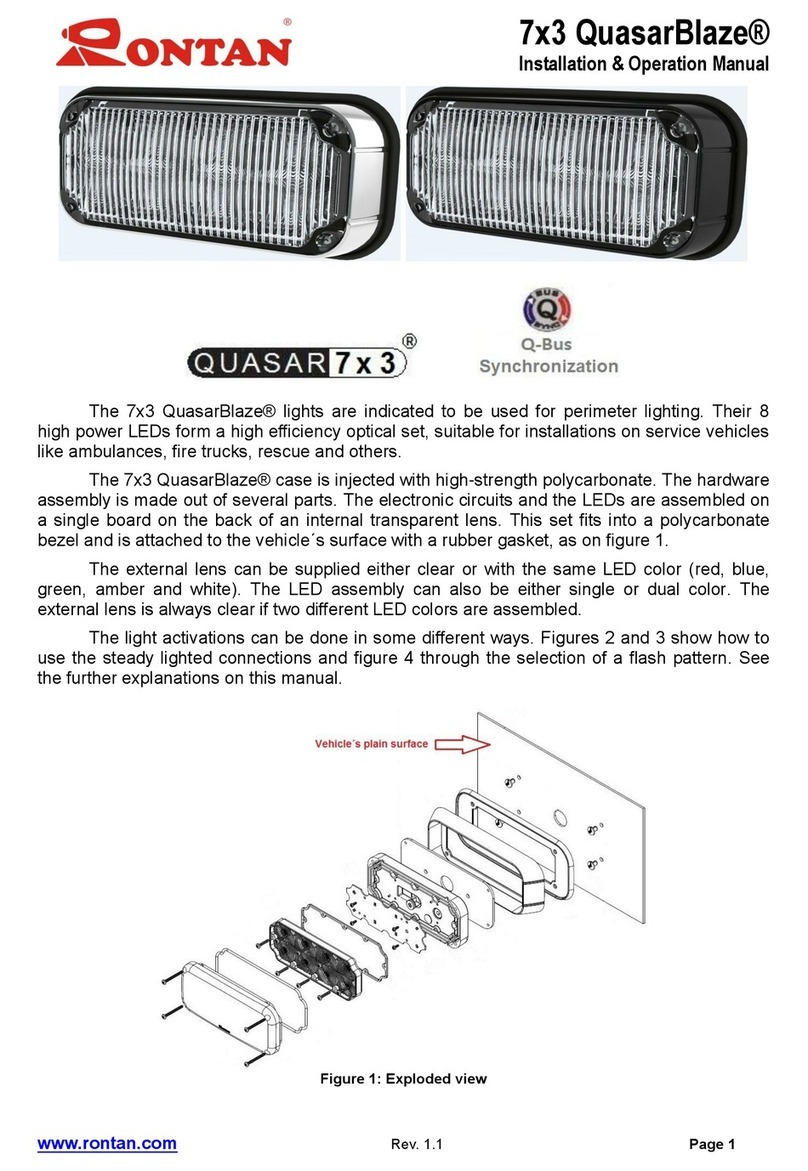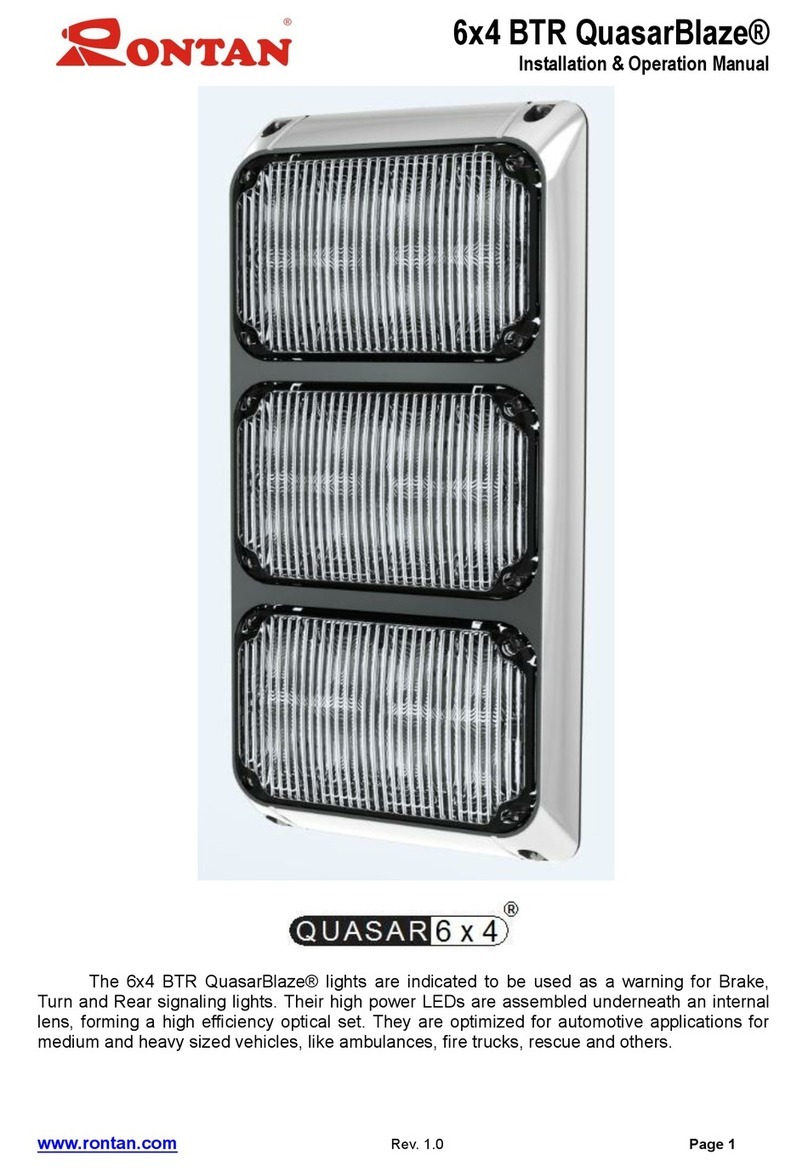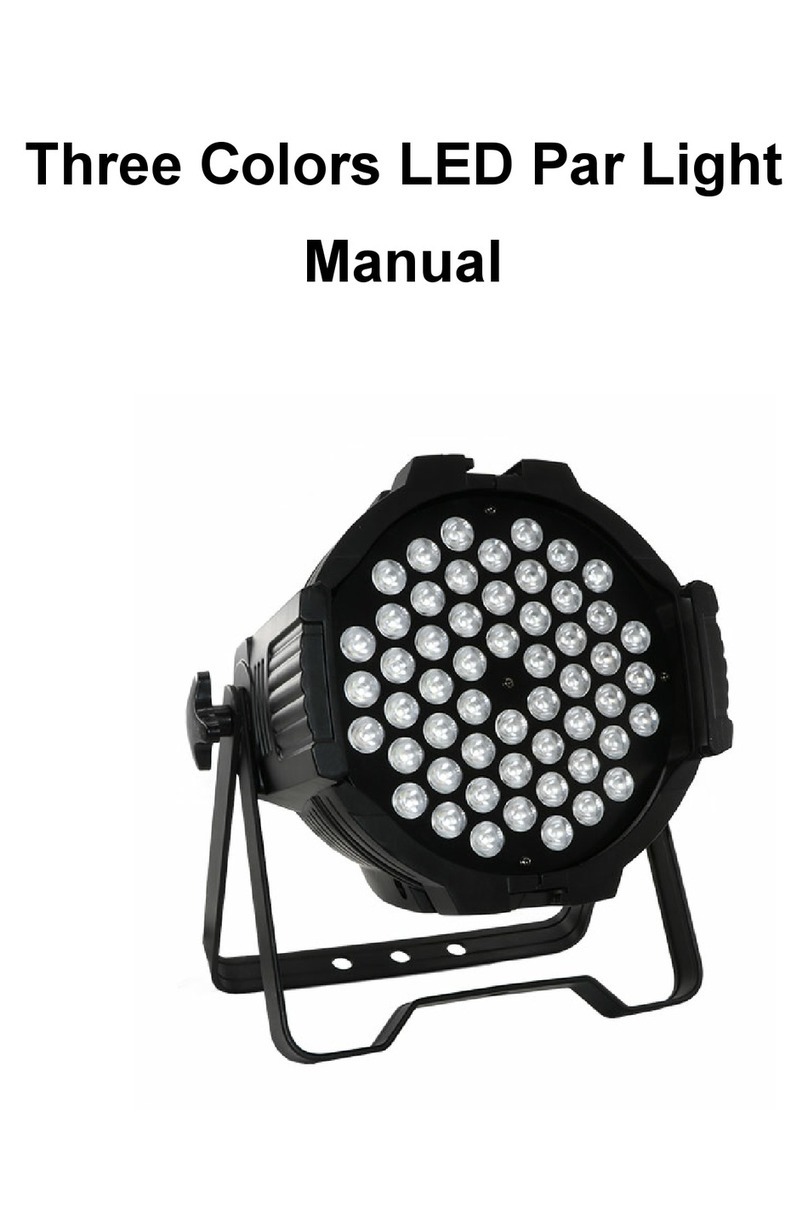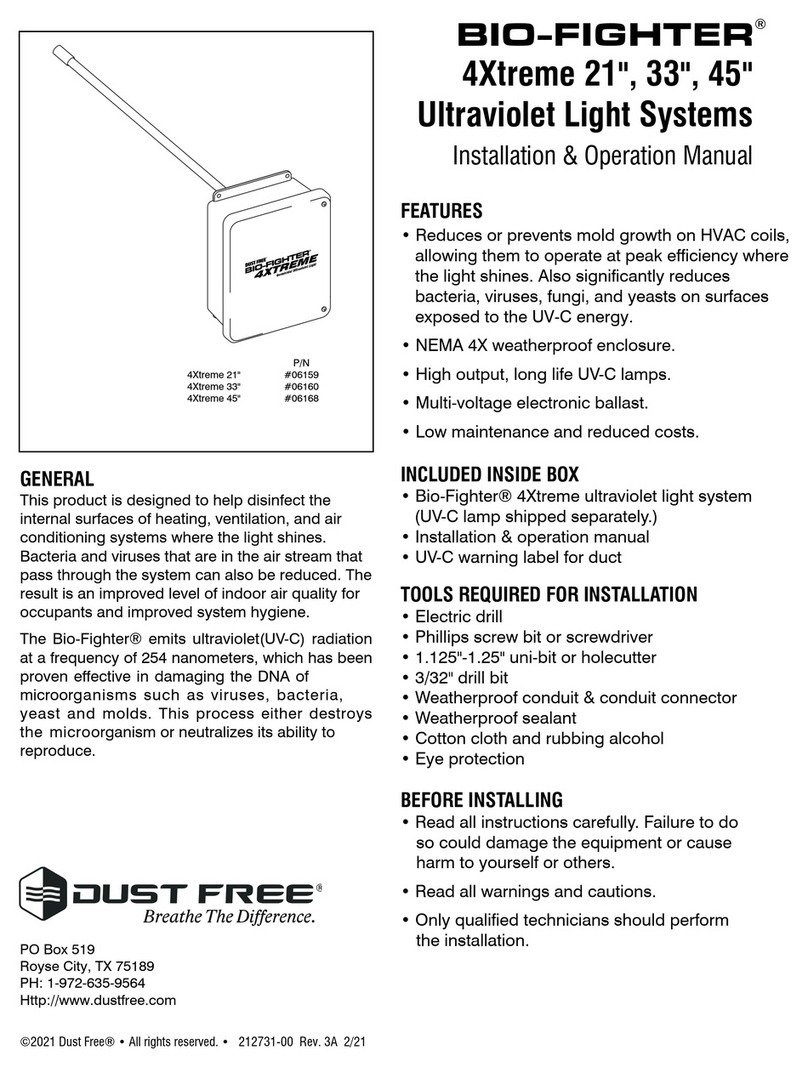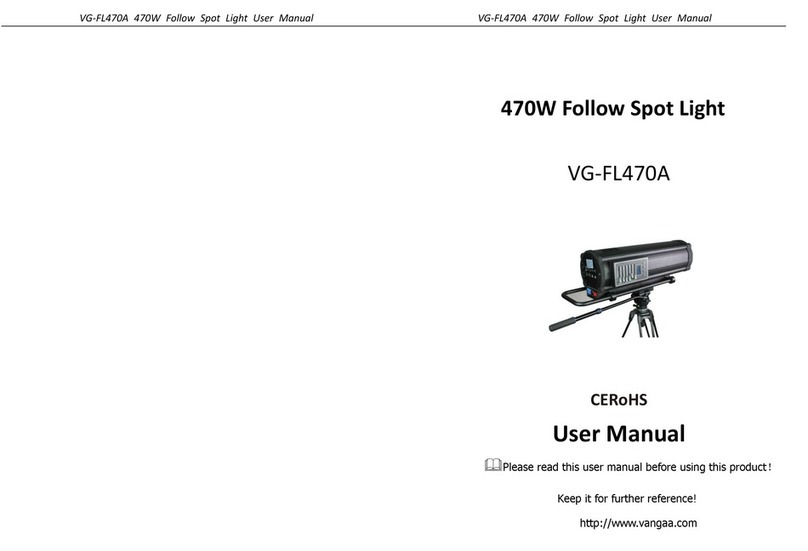Rontan Maximum Super Takedown Manual

Maximum Super Takedown
Installation, Operation & Programming Instructions
www.rontan.com Rev. 0.3 Page 1
The Maximum Super Takedown Lightbar:
Designed for multiple vehicle applications.
Available in 5 and 6 dome models
Designed and intended to function as an emergency warning light, with super
takedown, alley and directional stick options.
Assembled on SMD technology.
Intended for roof mount application.
Operated independently or in conjunction with Rontan light controllers (ICM40®,
DSC40®, Intelligent Siren –IS3000, etc.).
Stores all flash patterns in the light assembly intelligence.
Plug and Play operability and modular design of the light heads facilitate
installation, quick color changes, and field upgradeability.
Engineered with Rontan two-wire technology for ease of installation and quick
programming.
6 takedown modules in the 45” and 8 takedown modules in the 54” lightbars.
Note:
All Rontan North America products are SAE compliant and meet Calif. Title 13
standards.

Maximum Super Takedown
Installation, Operation & Programming Instructions
www.rontan.com Rev. 0.3 Page 2
Safety Message
WARNING
Before beginning installation of your lightbar, it is important to read these
instructions for the safe, correct installation and operation of this product.
Proper installation of this product requires the installer have good understanding of
automotive electrical systems and procedures.
Light system controls must be located so that the vehicle and controls can be
operated safely under all driving conditions.
DO NOT route any wires in the deployment path of your airbag. Refer to the vehicle
owner’s manual for the airbag deployment area.
Before drilling into a vehicle structure, verify carefully if both sides of the surface are
clear of anything that could get damaged. Install grommets into all wire passage
holes.
DO NOT drill any holes in the lightbar.
A lightbar system is a high current device. In order for it to function properly, a good
electrical ground connection must be made.
This lightbar is intended for use by authorized personnel only. The users have the
responsibility to ensure they operate the emergency warning devices in compliance
with the applicable laws and regulations.
File these instructions in a safe place and refer to them when performing
maintenance and/or reinstallation of this product.
Failure to follow all safety precautions and instructions may result in damage
to the product and vehicle or serious injury to individuals!

Maximum Super Takedown
Installation, Operation & Programming Instructions
www.rontan.com Rev. 0.3 Page 3
Introduction
Super Takedown is a new feature for the best-selling Rontan Maximum Wide-E-Tech
Lightbar.
This new feature has been added to this lightbar architecture through the customizable
capability that our new Rontan products offer.
It consists of white LEDs spread across the front modules, without sacrificing the
regular lightbar colors. On the rear the same concept is applied to the Amber LEDs for
the Directional Stick function.
1. Specification
Voltage: 12,8 V +/- 15%
Electric Current
NOMINAL SIZE
Maximum current (A)
FUSE AMPERAGE
45”
14
30A
54”
14
30 A
Super Takedown Light Heads:
All the front light heads will be Super Takedown modules for both sizes of lightbar.
The 45” will have 6 Super TD light heads and the 54” will have 8 Super TD light heads.
NOTE: If extra wire is needed, make certain to use larger gauge wire than supplied
with the lightbar.
Dimensions

Maximum Super Takedown
Installation, Operation & Programming Instructions
www.rontan.com Rev. 0.3 Page 4
Nominal Size
Dimension
A (in)
6 domes
45
7 domes
54
2. Installation
2.1. Mounting the hardware
Follow the steps below for proper hardware installation:
The Migfoot*
A. Insert the mounting bolts into the groove on the lightbar.
B. Place the Migfoot on the mounting bolts as shown and loosely tighten the nuts using
a 10mm wrench. *Used for the 45 inch lightbar.
C. Measure the distance of each corner from the vehicle roof. Use the formula below to
calculate the distance between the center of the lightbar and the inner edge of the
migfoot.
D (in) = roof [width/2] –13.5
Examples of distance (D):
Dodge Charger: D=12¼ inches
Ford Crown Victoria: D=12 inches
Chevy Impala: D= 12 inches

Maximum Super Takedown
Installation, Operation & Programming Instructions
www.rontan.com Rev. 0.3 Page 5
D. Tighten nuts snugly. (50 in-lb).
E. If necessary, use the supplied wedge shaped rubber foot pad in both feet to adjust
the angle of the lightbar if it is not level with the roof.
F. Loosely installing the roof mounting brackets with the long threaded bolts can be
performed at this point or this task can be performed once the lightbar is
appropriately positioned on the vehicle roof. Please note: Installation at this point
will mean that these metal pieces will be hanging loosely when the lightbar is
positioned over the vehicle roof dramatically increasing the chances for damaging
the vehicle surfaces during installation. Extreme care must be taken on your behalf
to avoid vehicular damage.

Maximum Super Takedown
Installation, Operation & Programming Instructions
www.rontan.com Rev. 0.3 Page 6
G. If not previously completed, place the long threaded bolts through the large hole in
the roof brackets as shown. Thread the bolt into the cylinder nut previously installed.
Make sure that the bolt crossed the cylinder nut all the way though. A flat tipped
screwdriver may be needed to properly align the cylinder nut.
H. Loosely tighten the long threaded bolts to pull the brackets to the roof lip. Drill 7/64th
inch pilot holes using the middle and outer 2 bracket holes as guides. Apply sealant
(RTV) to the drilled holes. Fasten the brackets to the roof with the six Philips head
sheet metal screws provided (3 per side). Once the brackets are secure, torque the
long threaded bolt to 30 in-lb.
Note: When using the supplied rubber grommet, drill a 3/4 inch hole in the roof for
routing the wiring for installation completion.

Maximum Super Takedown
Installation, Operation & Programming Instructions
www.rontan.com Rev. 0.3 Page 7
2.2. The Durusfoot*
Mounting the Durusfoot
Turn the lightbar upside down, and rest it on a soft, non-scratch surface. Place the
durusfoot on four of the included bolts and tighten the nuts, making sure the distance
from the edge of each durusfoot is equally spaced (about 5 inches) from the edge of the
lightbar. Insert 4 shock absorption bolts into each durusfoot. Hand-tighten each shock
absorption bolt as much as possible. Turn the lightbar over. Position the lightbar on the
roof of the car, being careful to not scratch the finish of the car. Measure each side to
make certain the lightbar is in the desired location. Mark the location of each shock
absorption bolt on the roof, remove the lightbar and replace on the soft surface. Drill the
holes being careful to not drill into any wires or damage the upholstery. Put RTV
sealant around the holes in the roof to seal against the infiltration of water. Place the
lightbar back on the roof of the vehicle placing the shock absorption bolts through the
drilled holes, and install the flat washers and M-8 nylon insert lock nuts tighten to 50 in.
lbs. *The Durusfoot is used for the 63 inch lightbar

Maximum Super Takedown
Installation, Operation & Programming Instructions
www.rontan.com Rev. 0.3 Page 8
Note: When using the supplied rubber grommet, drill a 3/4 inch hole in the roof
for routing the wiring for installation completion.
2.3. Routing the lightbar cable
Route the light cable into the wiring shield and towards the firewall to minimize interior
intrusion and to optimize wiring. Make sure you do not pinch or crush any wires when
running them through the wire shield.
The light cable has two power wires (RED and BLACK connect directly to the
positive and negative battery terminals) and three control wires
(GREEN, YELLOW and ORANGE). Note: Shield wire is to be cut.
The following is general information to aid you in the installation of the lightbar:
A) Install a fuse block on the end of the RED wire in the power cable. Use 30A fuse.
B) Remove the fuse from the fuse block before connecting the wire to the battery.
Place the fuse back in the fuse block at the end of installation.
C) Connect the RED wire to the POSITIVE terminal of the battery.
D) Connect the BLACK wire to the NEGATIVE terminal of the battery.
E) Route the control wires towards the controller or switch control panel.
F) Connect the three control wires to the controller or switch control panel.
G) Reinstall the fuse in the block.
There are different connections between the lightbar and the controller or switch control
panel. The controller can be controlled and programmed in analog or digital mode.

Maximum Super Takedown
Installation, Operation & Programming Instructions
www.rontan.com Rev. 0.3 Page 9
Electrical diagram 1
Note:
Refer to the next section for information about operational and programming
instructions.
3. Describing the lightbar functions
This lightbar provides selectable multiple flash patterns that can be used in all
functions: MODE 1-4, AUX 1-4 and EM 1-2. It is possible to have up to 8 steady
burning lights active at one time (takedowns).
Below is a brief description of each control function:
SLIDE SWITCH MODE 1-4 provides four modes of preprogrammed flash patterns via
slide control switch as described below:
Mode 1 –Alternative corner light heads will be activated. The flashing takedown
and alley functions will NOT be activated automatically.
Mode 2 –Most of the light heads will be activated. The flashing takedown and
alley functions will NOT be activated automatically.
Mode 3 –All light heads will be activated for an intense warning effect. In mode
3, the flashing takedown and alley functions will be activated automatically.
Mode 4 (additional) - All light heads will be activated for an intense warning
effect. In mode 4, the flashing takedown and alley functions will be activated
automatically.

Maximum Super Takedown
Installation, Operation & Programming Instructions
www.rontan.com Rev. 0.3 Page 10
AUX1 to AUX4: Several alternative preprogrammed flash patterns will be activated.
ALLEY-L: LEFT side lights available in LED.
ALLEY-R: RIGHT side lights available in LED.
TAKEDOWN: FRONT lights available in LED.
Steady Burn (SB): Up to 8 LED light heads will be activated simultaneously.
CRUISE: Some corner light heads will be activated in low power.
Left Directional Stick (DS-L): The REAR light heads (usually amber lights) will be
activated and produce a left arrow flashing pattern, instructing traffic to move LEFT.
Right Directional Stick (DS-R): The REAR light heads (usually amber lights) will be
activated and produce a right arrow flashing pattern, instructing traffic to move RIGHT.
Center Directional Stick (DS-C): The REAR light heads (usually amber lights) will be
activated and produce a center arrow flashing pattern, instructing traffic to move to
either side of the vehicle.
HAZARD: Hazard lights (usually amber lights) will be activated in the directional stick
function in order to alert other drivers to a problem.
EMERGENCY 1 (SUPER TAKE DOWN-STEADY): When this function is activated, all
front, white light heads will be activated in a continuous, steady burn mode.
EMERGENCY 2 (SUPER TAKE DOWN-FLASH): When this function is activated, all
front, white light heads will be activated in flashing mode (Quad Strobe).
DS1-L to DS8-R: Each input will activate each individual light head (usually amber
lights) for directional signal purposes.
CUT FRONT: Turn the front light heads OFF.
CUT REAR: Turn the rear light heads OFF.
DIMMER: The low power setting of the lightbar will be activated to decrease the
brightness of LED light heads.

Maximum Super Takedown
Installation, Operation & Programming Instructions
www.rontan.com Rev. 0.3 Page 11
Operational & Programming Instructions
4. Operating a compatible S-series digital controller in digital mode
Most of the functions described above will be only activated and set up using a Rontan
digital controller (E.g.: Rontan Intelligent Modular Siren - IS3000). Refer to the IS3000
manual for further information. To install the IS3000, proceed as follows:
Electrical diagram 2
4.1. Operating an analog controller in a digital mode
An analog controller (E.g.: Rontan LC 500) will work with any Rontan ICM (Interface
Control Modules) modules. The ICM modules are available in 4 models: ICM 10, 20, 30
and 40. The ICMs convert a 12-Volt input signal to a digital signal, which operates the
Rontan S-Series products. Activation can occur by constant 12V or Ground (GND).
Refer to the ICM manuals for further information. To connect the controller to the ICM,
proceed as follows:
Electrical diagram 3

Maximum Super Takedown
Installation, Operation & Programming Instructions
www.rontan.com Rev. 0.3 Page 12
4.2. Operating DSC40 in a digital mode
Using the DSC40 with no ICM, ONLY the Directional Stick (DSR, DSL, and DSC) and
HAZARD functions will be activated. Additionally, EMERGENCY 1 and EMERGENCY
2 can ONLY be used with toggle switches. For further information, refer to the DSC40
manual. To connect the DSC40, proceed as follows:
Electrical diagram 4
4.3 Operating in manual mode
To connect the lightbar in manual mode, proceed as follows:
Electrical diagram 5
Functions are activated by applying +12 VDC to a control wire. The control wire
functions are:
Orange: MODE 4 function. +12 VDC Input
Green: Steady Burn function. +12 VDC Input
Yellow: Flash pattern selection.

Maximum Super Takedown
Installation, Operation & Programming Instructions
www.rontan.com Rev. 0.3 Page 13
Switching the flash patterns (cycle forward though available patterns)
WIRE
FUNCTION
ACTION
RESULT
GREEN
Steady
Burn
Must be open
ORANGE
Flash
Must be tied to +12V
YELLOW
PRG
Open + (+12V) + Open _|‾|_
>>>
cycle to next flash pattern
Note:
The first pattern is blank (all light heads off).
Switching the steady burn lights
WIRE
FUNCTION
ACTION
RESULT
GREEN
Steady
Burn
Must be tied to +12V
ORANGE
Flash
Must be open
YELLOW
PRG
Open + (+12V) + Open _|‾|_
>>>
cycle to next light head
Notes:
The end of the flash pattern is signified with a “blank” flash pattern (all light
heads off).
It is possible to have up to 4 preprogrammed steady burning lights active at one
time. However, only one steady burn light will be activated when the above
procedure is conducted. It is possible to reactivate the 4 preprogrammed steady
burning lights using a Rontan digital controller.
Different applications require different functions. Use the table below for further
information of all the functions available for each operational mode:

Maximum Super Takedown
Installation, Operation & Programming Instructions
www.rontan.com Rev. 0.3 Page 14
Digital
Controller
in Digital
Mode
Analog Controller in
Digital Mode using
Interface Control
Master
DSC40 in
Digital Mode
Manual
Mode
ICM
40
ICM
30
ICM
20
ICM
10
Mode 1 to 4
Only
mode 4
AUX1 to
AUX4
ALLEY-L/R /
TD
SB
CRUISE
DS-L / C / R
(1)
(1)
HAZARD
(1)
(1)
EMERG 1 / 2
(Super TD
Steady burn
and flashing)
(1)
(1)
DS1L to DS8-
R
CUT FRONT
CUT REAR
DIMMER
Note: (1) When a DSC40 is connected to an ICM (Electrical diagram 3).
5. Maintenance
To conduct basic maintenance instructions, some automotive electrical knowledge is
necessary.
5.1. Changing a light head
For light head replacement, proceed as follows:
A) Before working on the light, disconnect the lightbar from the power source or
remove the fuse.
B) Remove the 4 screws that secure the lightbar dome. Remove dome.
Operational
Mode
Feature

Maximum Super Takedown
Installation, Operation & Programming Instructions
www.rontan.com Rev. 0.3 Page 15
C) Disconnect the two 6-pin connectors from the light head.
D) Remove the nine Philips head screws holding the corner boards in place, or, for
the middle boards, remove the two 6-pin connectors and the five screws holding
the light heads in place.
E) Unplug the light head and replace it with the new light head and plug it back into
the lightbar, insert fuse and reinsert the screws removed earlier then reconnect
the 6-pin connector.
F) Reconnect the lightbar to power source or replace the internal fuse.
G) Performing Polling: You must perform the polling procedure (using an ICM
device) or just using the wires. Otherwise, the lightbar will not activate the flash
patterns properly. For further information, go to section 5.2.
H) After performing the polling procedure, place the dome cover back on the
lightbar base and secure it using the screws removed earlier.
Note:
This lightbar has different electronic board types. The core of the system is the
Motherboard (MB). It is located on the first light head, and connected to the external
electrical harness. In case the motherboard needs to be replaced, call technical
assistance for the motherboard specific firmware for your lightbar.

Maximum Super Takedown
Installation, Operation & Programming Instructions
www.rontan.com Rev. 0.3 Page 16
4.2 Migfoot parts
ITEM
QTY
DESCRIPTION
1
2
Migfoot Base plate
2
4
Rubber foot Pad
3
4
A6.4 flat washer
4
4
M6 Stainless steel nylon insert lock Nuts
5
1
5/16-18 x 2” Stainless steel tap bolt or 5/16-18 x 4” Extended stainless steel tap bolt
6
1
Roof mounting bracket
7
4
M6 x 16mm Stainless steel tap bolt
8
1
Cylinder nut
6. Polling
Polling is an important procedure to ensure the lightbar operation. When replacing an
LED board or module in a Rontan S-Series product, you must perform a Polling upon
installation to allow the lightbar to recognize and include the new application.

Maximum Super Takedown
Installation, Operation & Programming Instructions
www.rontan.com Rev. 0.3 Page 17
In this process, all the LED lights receive a sequential number. Additionally, the
motherboard identifies information such as:
Total LED light heads
Presence of takedown and alleys
This process also verifies if the control wires were connected correctly, and not
switched.
Polling can be performed with all compatible Rontan S-series controllers. Refer to each
controller manual for instructions.
Manual Polling Function:
* Hold orange and green together, then touch and hold the yellow wire to them
for approximately 5 seconds until light head one begins to flash and then release.
Polling has basically 3 steps:
1st Step –Identifying the light heads and light sequence
This first step is used to identify internal communication problems that may occur in the
lightbars. The connection between the motherboard and the light heads occurs in
sequence (MB > 1st LH > 2nd LH > 3rd LH > 4th LH >…). For example, information will
get to the third light head after going through the first and second light head and so on.
It is very important to verify the correct light sequence of the LED light heads.
When the manual polling process is initialized, the first light head will be activated for
approximately 1s. Each individual light head will flash sequentially. Once the last light
head is reached, the next pattern will cycle back to light head #1. This cycle will be
repeated 10 times. Once the operation of the lightbar is verified, simply tap the
YELLOW wire into the RED wire and proceed to the next step.
How to verify problems in the light heads:
The communication between the motherboard and the light heads is CORRECT
if the lights flash sequentially.
The communication between the motherboard and the light heads is
INCORRECT if the lights flash rapidly and simultaneously, or if the
WIRE COLOR
FUNCTION
ACTION
RESULT
GREEN
Steady Burn
Must be tied to +12V
ORANGE
Flash
Must be tied to +12V
YELLOW
PRG
Open + (+12V) + Open _|‾|_
Start 1st Step-Identification
YELLOW
PRG
Open + (+12V) + Open _|‾|_
Start 2nd Step -Show
Firmware version
YELLOW
PRG
Open + (+12V) + Open _|‾|_
Start 3rd step - Show
Activation Mode
YELLOW
PRG
Open + (+12V) + Open _|‾|_
Stop all process

Maximum Super Takedown
Installation, Operation & Programming Instructions
www.rontan.com Rev. 0.3 Page 18
communication does not run through one of light heads, which means that the
communication problem occurred between the last active light and the following
inactive light. The error may have occurred because of an electronic defect or an
interrupted internal electrical harness.
2nd Step –Verifying firmware version
The first light head of the lightbar will flash in order to specify the firmware version on
the MB.
E.g.: Version 1.8 (V1.8):
☼▫▫▫▫☼▫☼▫☼▫☼▫☼▫☼▫☼▫☼▫▫▫▫
3rd Step –Verifying the activation mode
Similar to Step 2, the first light head of the lightbar will flash in order to specify the
activation mode of the lightbar.
E.g.: Activation Mode (Mode 6):
☼▫☼▫☼▫☼▫☼▫☼▫▫▫▫
Description:
☼= Short Flash ☼= Long Flash
▫= Short Interval ▫▫▫▫ = Long Interval
7. Warranty message
For warranty information regarding this product, please visit:
www.rontantech.com/eng/warranty
Table of contents
Other Rontan Lighting Equipment manuals
Popular Lighting Equipment manuals by other brands
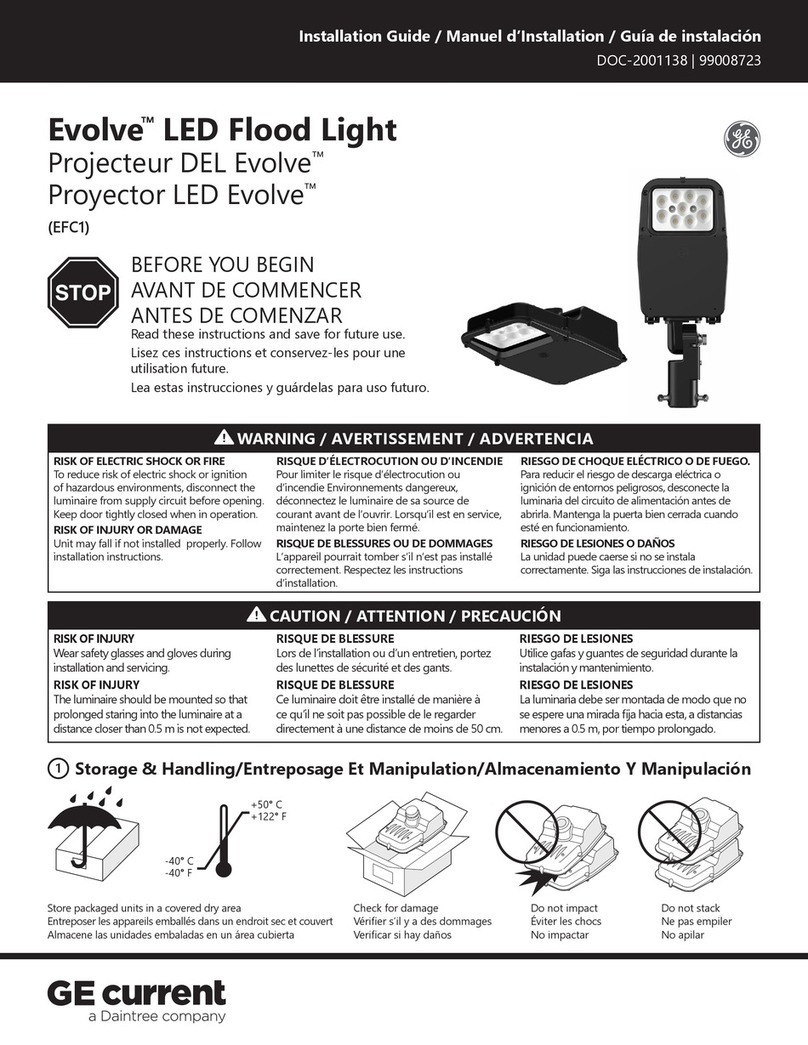
Daintree
Daintree GE current Evolve EFC1 Series installation guide
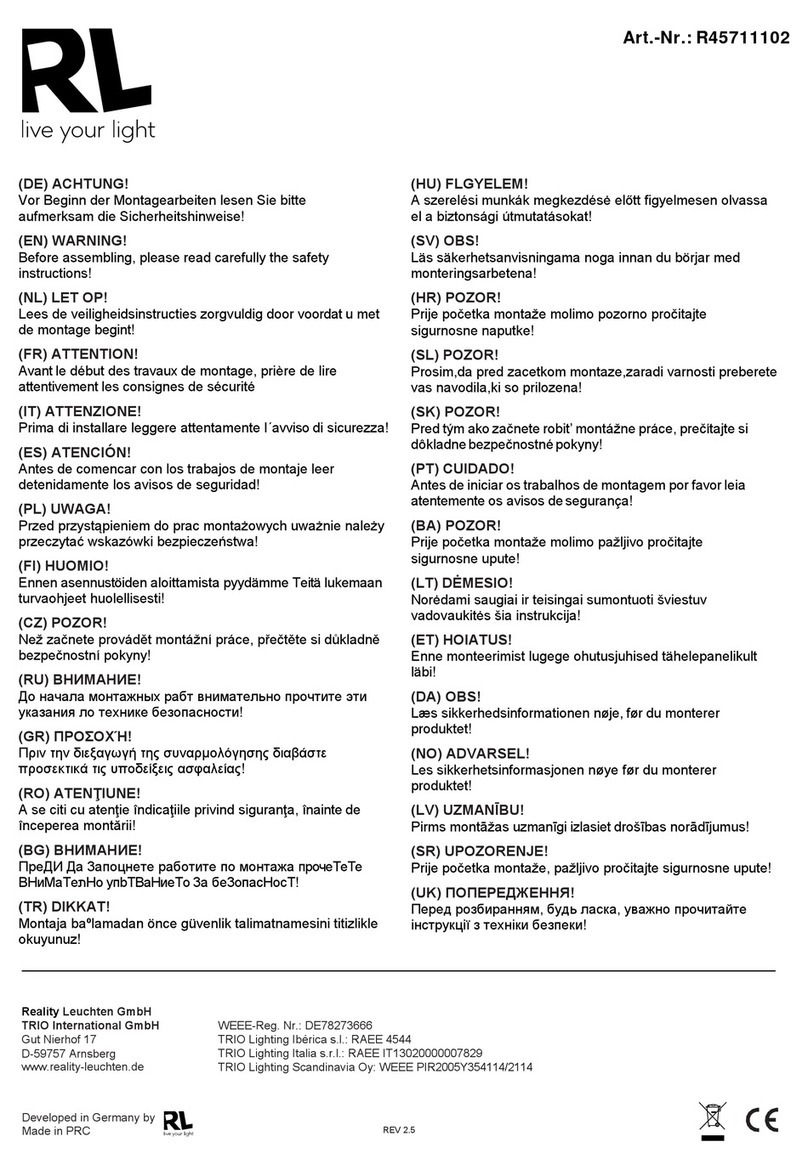
RL
RL R45711102 manual
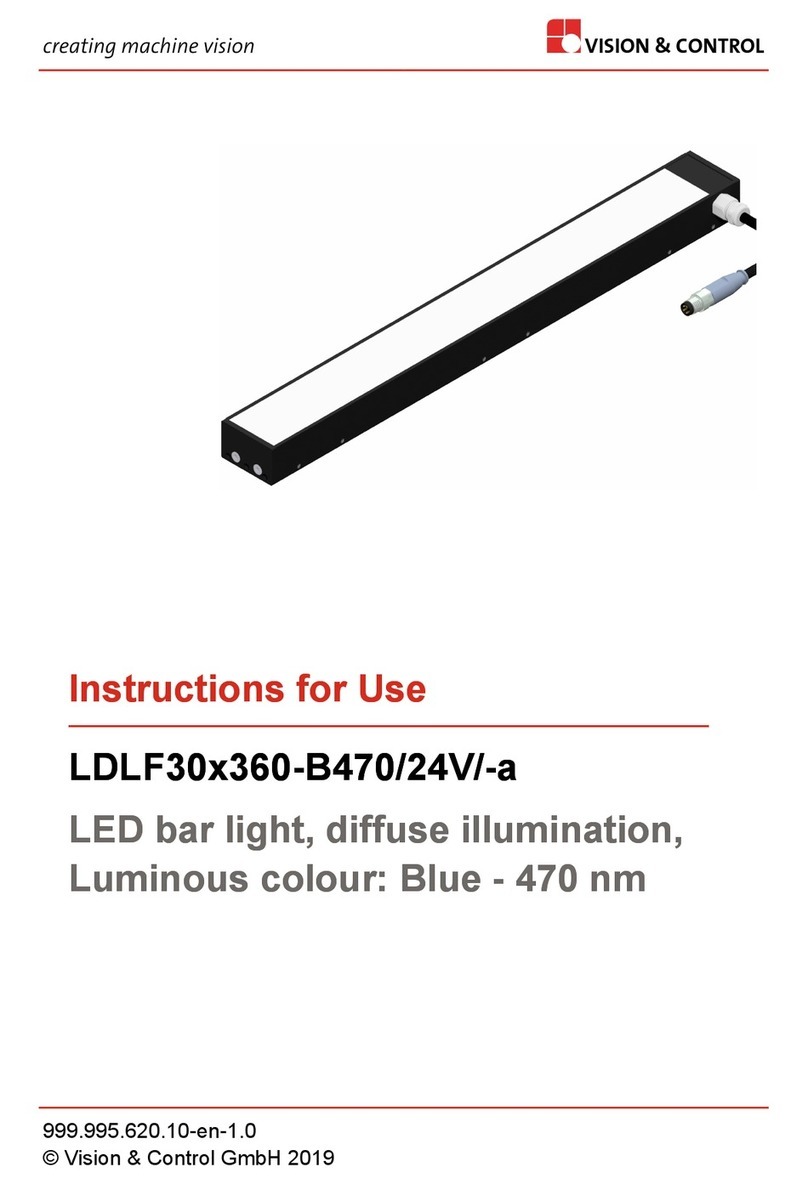
Vision & Control
Vision & Control LDLF30x360-B470/24V/-a Instructions for use
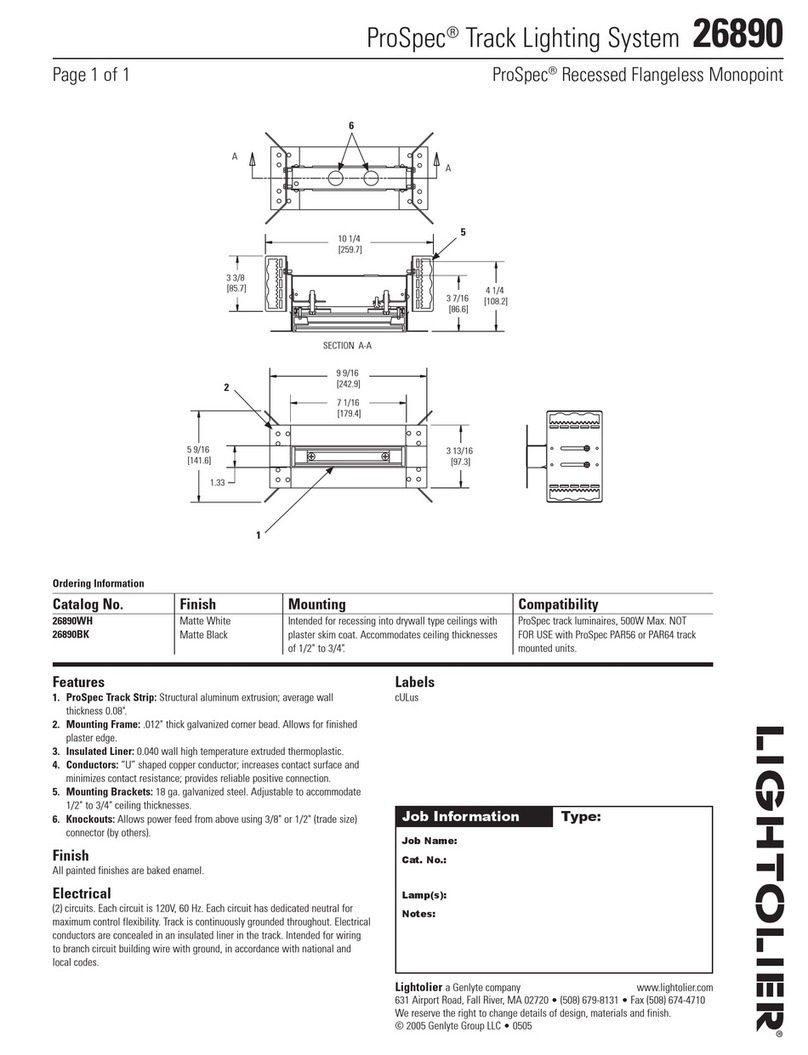
Lightolier
Lightolier ProSpec 26890 specification

NANLITE
NANLITE PavoTube II 15X user manual
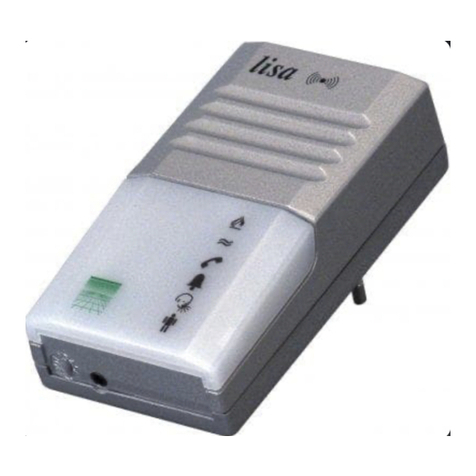
HumanTechnik
HumanTechnik lisa operating instructions
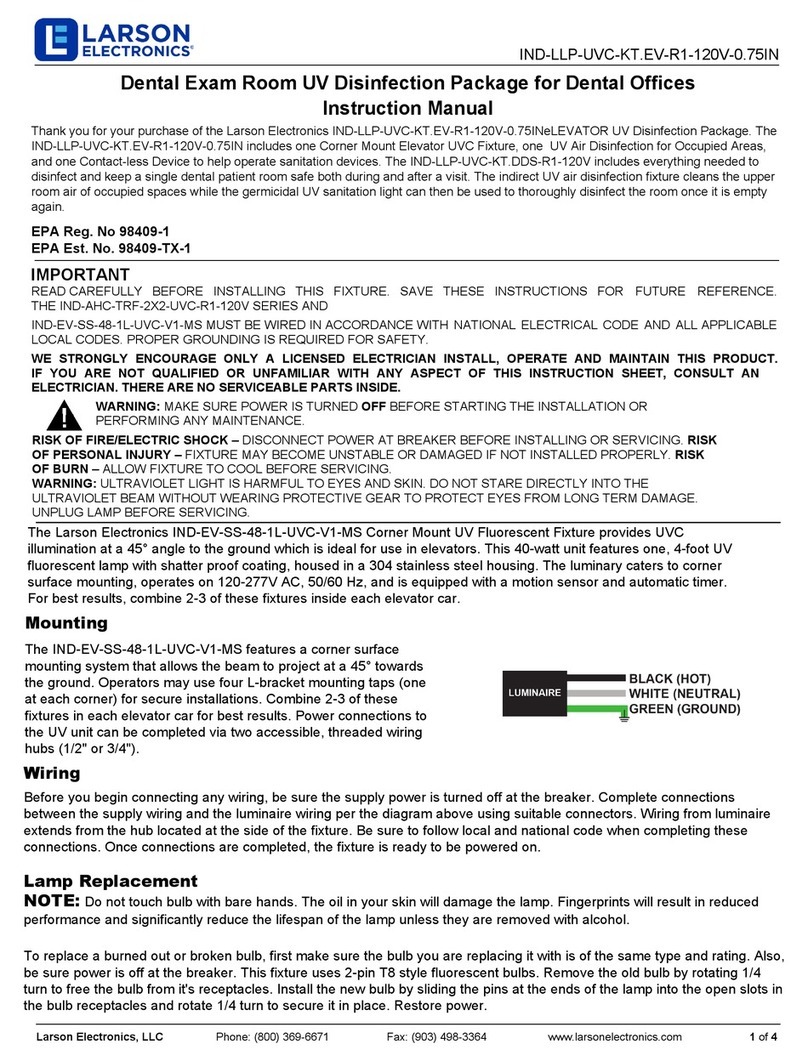
Larson Electronics
Larson Electronics IND-LLP-UVC-KT.EV-R1-120V-0.75IN instruction manual
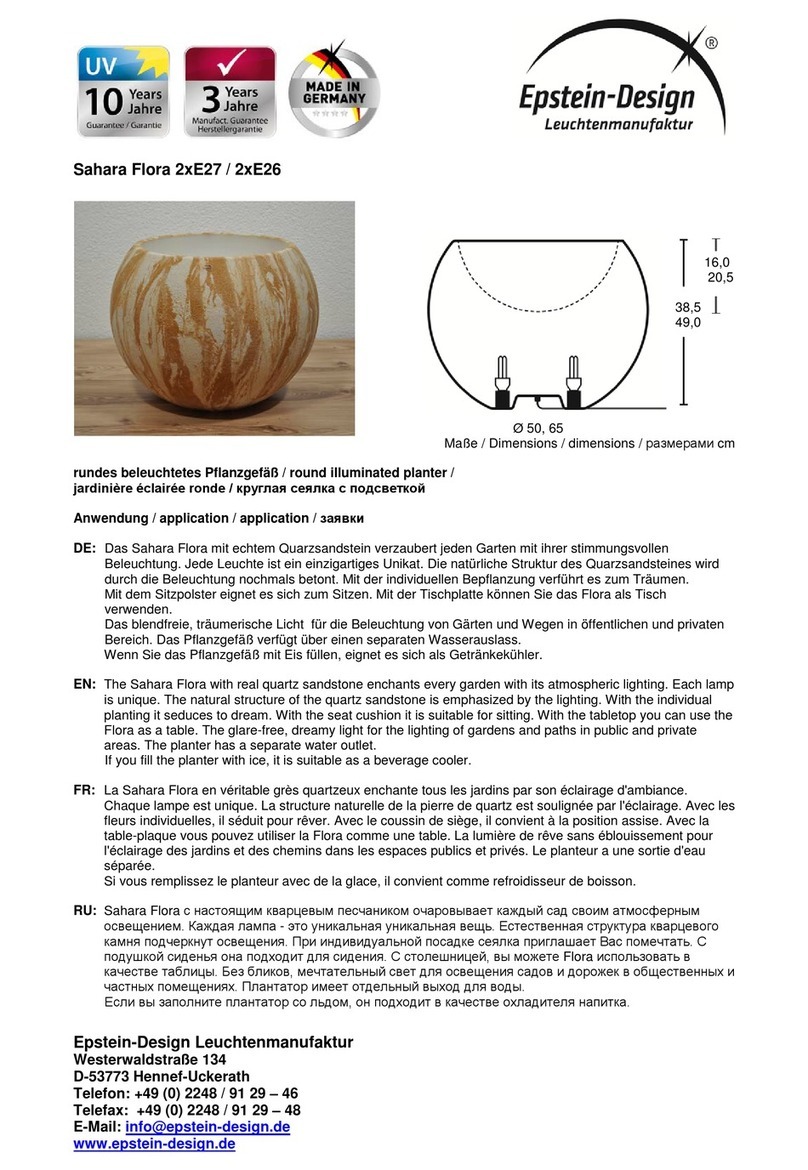
Epstein-Design
Epstein-Design Flora 2 E27 Series manual
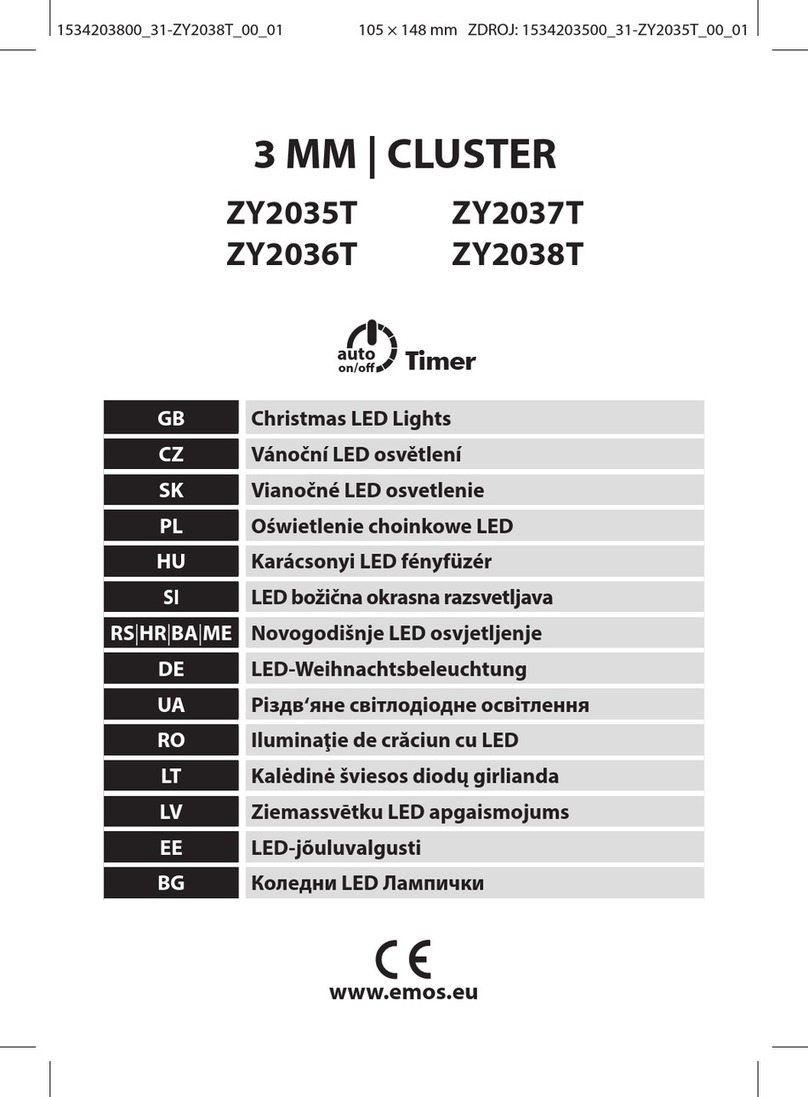
Emos
Emos CLUSTER quick guide
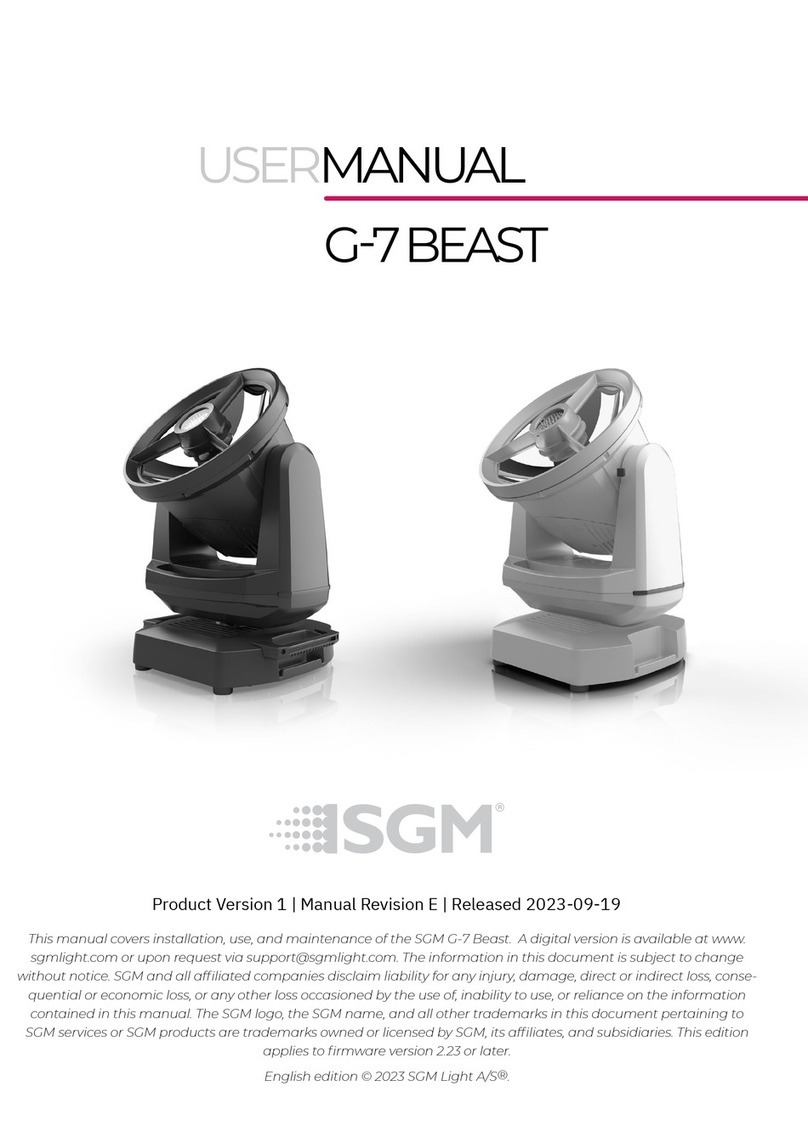
SGM
SGM G-7 BEAST user manual
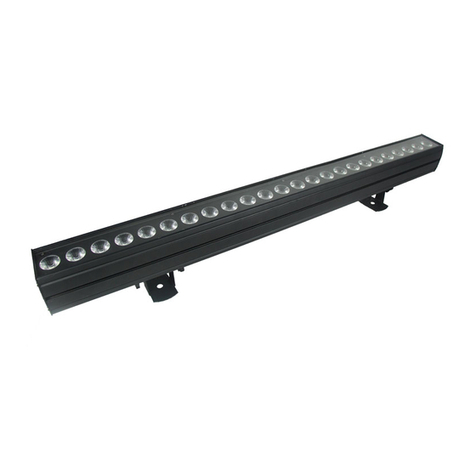
MJ LED LIGHTNING
MJ LED LIGHTNING MJ-3126-4IN1 user manual
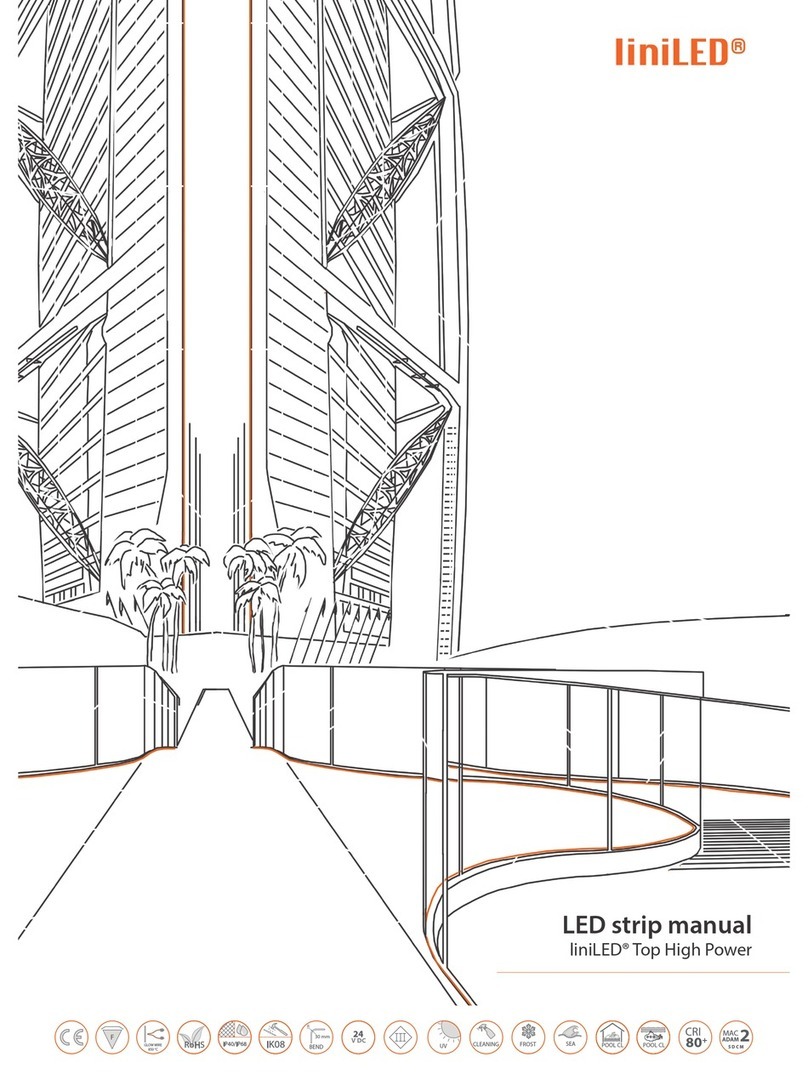
Organic Lighting Systems
Organic Lighting Systems liniLED Top manual
